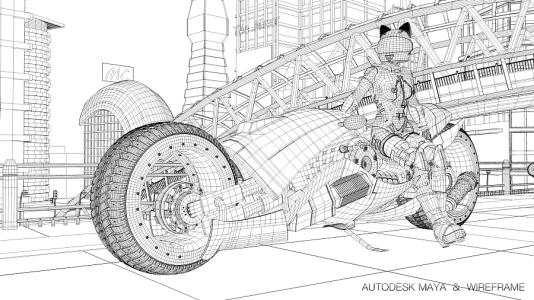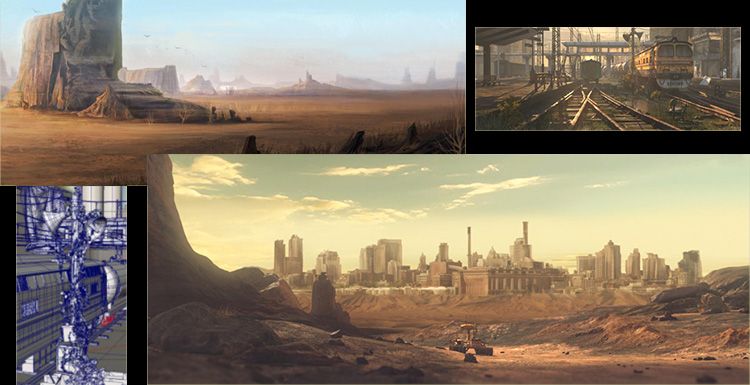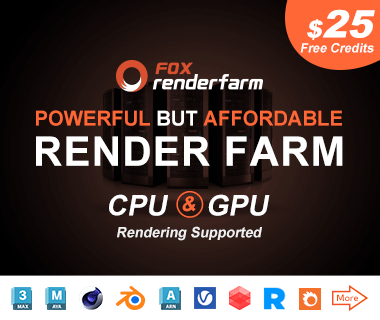Arnold for Maya Tutorial: Ice Cube Material

Fox Renderfarm is known as a powerful but affordable render farm in the CG industry. Fox Renderfarm supports most mainstream software, Renderers, and Plugins, including Maya and Arnold. This article is about the knowledge of ice cube material in the basic material related learning in the Arnold tutorial. I hope it can be helpful for your learning of Arnold.
In all kinds of texture making, ice cubes are a special kind. The overall texture of the ice cube is transparent, and has high specularity and refraction, as well as a certain caustics. Although the ice cubes are smooth, fine particles can still be seen at a certain angle. These particles are actually some small white bubbles generated during the ice-making process. There are many ways to achieve this effect. Today we will share a method of making ice cubes.
Production
First create a block to serve as the main body of ice. Then create an Arnold base shader and modify some of the settings. Because the ice cube material is transparent. There is no color, so there is no surface color. In Diffuse, set Color to black.

Increase the Weight value in Specular. Because the surface of ice has no roughness and is very smooth, you need to open Fresnel to simulate this effect.

Set the refraction, the value of Weight also needs to be adjusted up, the value of IOR is set to 1.33, and then check Fresnel, also need to check Caustics.

Now the basic texture of the ice cube has been set.
Now you need to add a small bubble effect to the ice cube. First create an Arnold 3D texture material, give the model, the following dialog box appears, just close it.

After jumping out of the Aibump3d1sg node, you just need to drag the created Arnold texture to the Surface Shader in Arnold of Aibump3d1sg, then the model will appear small bubbles of bump effect.
Next, place the ice texture made in the Shader of Aibump3d1 in the texture.
Next, you need to add a Stucco texture map to the Bump Map in the 3D node, and then change the Bump Height to 0.5.


Now that the material part is complete, the rest needs to add an HDRI. Open the material editor, create an aiSky environment ball map in Arnold, and paste an HDR environment map in Color. Change the value of Intensity to 2.

Some settings are required before rendering. Click the Background link in the Environment to create the aiSky texture that was just created, so that the lights in the scene are set up.
The sampling value of Cameraca is increased to 5 (the higher the value, the slower the rendering speed). Refraction value is set to 4. Set the Refraction value to 4 in Ray depth. Create a sphere as an environment and check Visibe in Refiections in Render Stats. Then conduct a rendering test.

Rendering

In 3D texture mapping, Maya's own 3D texture mapping can achieve many different effects (turn off the highlighter and refraction of the shader, and the following effects appear,

The highlight and refraction of the shader are turned on, rendering:

Fox Renderfarm hopes it will be of some help to you. As you know, Fox Renderfarm is an excellent cloud rendering farm in the CG world, so if you need to find a render farm, why not try Fox Renderfarm, which is offering a free $25 trial for new users? Thanks for reading!
Recommended reading
Top 9 Best And Free Blender Render Farms of 2025
2024-12-30
Revealing the Techniques Behind the Production of Jibaro "Love, Death & Robots", Which Took Two Years to Draw the Storyboard
2025-02-10
Top 10 Free And Best Cloud Rendering Services in 2025
2025-03-03
Top 8 After Effects Render Farm Recommended of 2025
2025-02-10
Top 5 Best and Free 3d Rendering Software 2025
2025-02-10
Shocked! The Secret Behind Using 3D to Make 2D Animation was Revealed!
2025-02-10
How to Render High-quality Images in Blender
2024-12-04
Easy Cel Shading Tutorial for Cartoon in Blender Within 2 Minutes
2025-02-10
Partners
Previous: How Does Maya Make Arnold Render Transparent Textures (Tutorial Step by Step)
Next: 3ds Max Tutorials: How to Set A Realistic Interior Lighting
Interested





